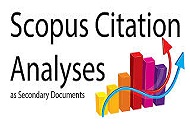Pemanfaatan Bahan Sederhana Menjadi Alat Peraga Keranjang Faktor untuk Meningkatkan Hasil Belajar Matematika Materi FPB dan KPK pada Siswa Kelas V SDN 10 Mataram
DOI:
https://doi.org/10.33394/jk.v2i2.453Keywords:
Basket Factor, Learning OutcomesAbstract
of SDN 10 Mataram on FPB and KPK material was low. It caused by teachers didn’t use props which suitable
in learning process. To solve problem above, it was conducted action with using props cart factor to improve
result of students’ mathematic achievement at fifth grade students of SDN 10 Mataram on FPB and KPK
materials. Stage of this research consisted of planning, acting, observing, evaluating and reflecting. Subject of
this research was all of fifth grade students of SDN 10 Mataram was 47 students, consisted of 21 female
students and 26 male students. Data of this research was result of students’ learning achievement and teachers’
activities and students’ activities. Result of students’ learning was gotten with giving test and data of teachers’
activities and students’ activities was gotten through observation sheet. Score of students’ activities was 20,66
and teachers’ activities was 22,68 with very good category. And mean score of students was 79,02. That score
showed that there is improved from previous year got score 66,54. Beside that classical completeness was
improved from academic year 2013/2014 with percentage of completeness was 32,61% become 85,11% in
acedemic year 2014/2015. Conclusion of using prop cart factor was prop cart factor could improve result of
learning achievement on FPB and KPK materials at fifth grade students of SDN 10 Mataram.
References
Aunurrahman, dkk. 1994. Penelitian
Pendidikan SD. Direktorat Jenderal
Pendidikan Tinggi Kementerian
Pendidikan Nasional.
Djamarah. 1994. Prestasi Belajar dan
Kompetensi Guru. Surabaya: Usaha
Nasional.
Hj. Irni, Pemanfaatan Bahan Sederhana Menjadi Alat Peraga Kerangjang Faktor …
Ditjen Dikdasken, Diknas. 2009. Evaluasi
Pembelajaran KTSP.
Fathani, Abdul Halim. 2009. Matematika:
Hakikat dan Logika. Yogyakarta: Ar-
Ruzz Media Group.
Hafi Anshari, HM. 1983. Pengantar Ilmu
Pendidikan. Surabaya: Usaha
Nasional.
Hamalik, O. 1994. Media Pendidikan.
Bandung: Penerbit PT. Citra Aditya
Bakti.
Heruman. 2007. Model Pembelajaran
Matematika di Sekolah Dasar.
Bandung: PT. Remaja Rosdakarya.
Nurkancana, Wayan., dkk. 1983. Evaluasi
Pendidikan. Surabaya: Usaha
Nasional.
Purwanto. 2009. Evaluasi Hasil Belajar.
Yogyakarta: Pustaka Pelajar.
Rohani, Ahmad. 1997. Media Instruksional
Edukatif. Jakarta: Rineka Cipta.
Slameto. 2003. Belajar dan Faktor-Faktor
yang Mempengaruhinya. Jakarta:
Rineka Cipta.
Sudjana, Nana. 2009. Dasar-Dasar Proses
Belajar Mengajar. Bandung: Sinar
Baru Algensindo.
Supatmono, Catur. 2009. Matematika Asyik.
Jakarta: PT Grasindo.
Thoha, Chabib. 1996. Teknik
Evaluasi Pendidikan. Jakarta: PT.
Raja Grafindo Persada.
Utomo, Dwi Priyo dan Ida Arijanny. 2009.
Matematika untuk Kelas V SD/MI.
Jakarta: Pusat Perbukuan
Departemen Pendidikan Nasional.
Wijaya, Ariyadi. 2012. Pendidikan
Matematika Realistik. Yogyakarta:
Graha Ilmu.
Downloads
Published
How to Cite
Issue
Section
Citation Check
License
License and Publishing AgreementIn submitting the manuscript to the journal, the authors certify that:
- They are authorized by their co-authors to enter into these arrangements.
- The work described has not been formally published before, except in the form of an abstract or as part of a published lecture, review, thesis, or overlay journal.
- That it is not under consideration for publication elsewhere,
- That its publication has been approved by all the author(s) and by the responsible authorities – tacitly or explicitly – of the institutes where the work has been carried out.
- They secure the right to reproduce any material that has already been published or copyrighted elsewhere.
- They agree to the following license and publishing agreement.
Authors who publish with JK agree to the following terms:
- Authors retain copyright and grant the journal right of first publication with the work simultaneously licensed under a Creative Commons Attribution License (CC BY-SA 4.0) that allows others to share the work with an acknowledgment of the work's authorship and initial publication in this journal.Â
- Authors are able to enter into separate, additional contractual arrangements for the non-exclusive distribution of the journal's published version of the work (e.g., post it to an institutional repository or publish it in a book), with an acknowledgment of its initial publication in this journal.
- Authors are permitted and encouraged to post their work online (e.g., in institutional repositories or on their website) prior to and during the submission process, as it can lead to productive exchanges, as well as earlier and greater citation of published work.
- Open Data Commons Attribution License, http://www.opendatacommons.org/licenses/by/1.0/ (default)

This work is licensed under a Creative Commons Attribution-ShareAlike 4.0 International License.








